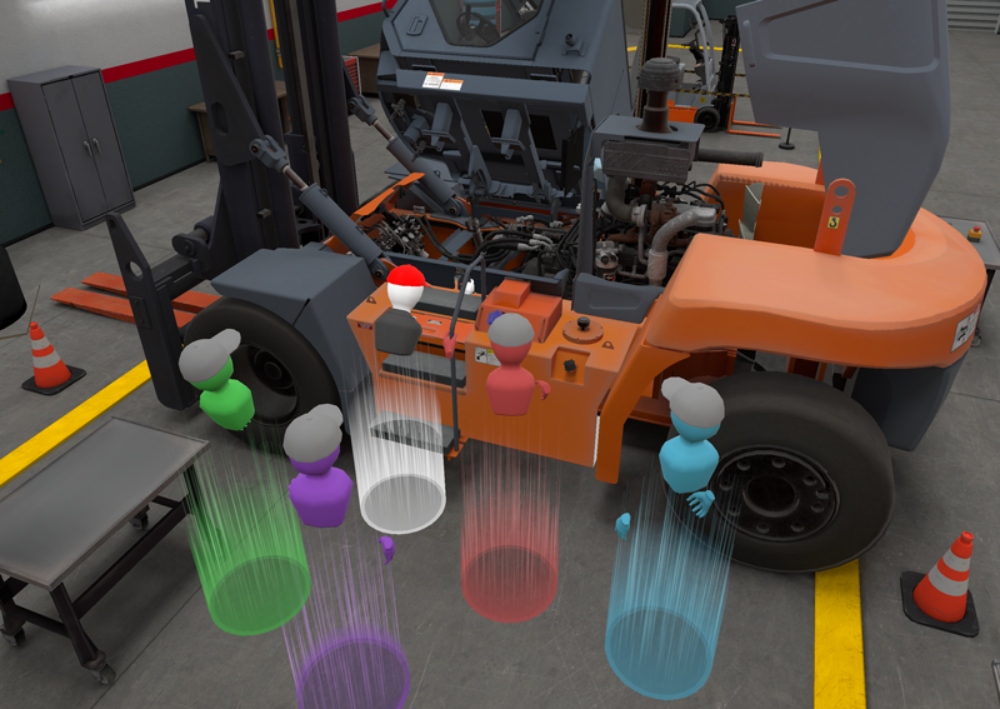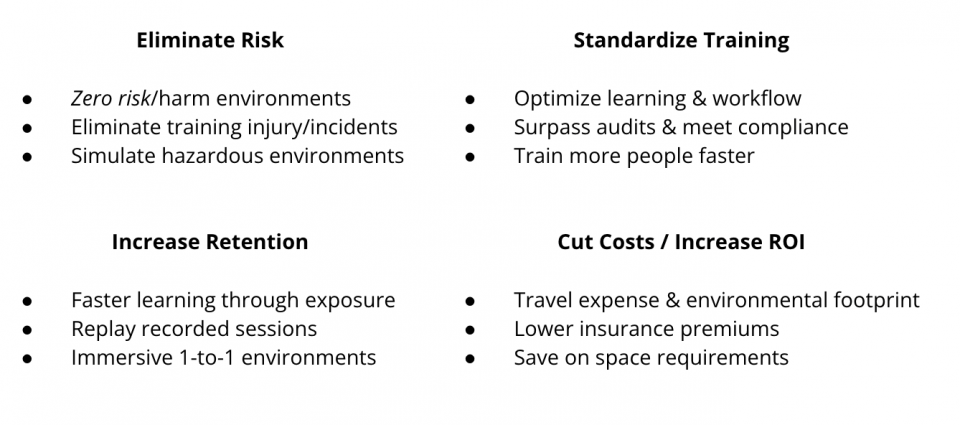Comments
- No comments found

The use of virtual reality (VR) training is turning the impossible into a reality.
VR provides safe and cost-effective training alternatives that look and feel natural. VR provides fully immersive environments enabling trainees to handle real-world scenarios, including dangerous situations, in a safe training experience.
Training is becoming a more widespread use of VR in the enterprise, with 50% of respondents to the Industrial XR Training Survey reporting that their VR strategy belongs to the training, learning, and development department. Almost 80% of respondents said that the purpose of their industrial XR program is employee education.
Companies that used VR technology found that employees were better prepared for job duties than traditional training methods.

Proper training of employees in rare, dangerous, and unexpected incidents can keep them safe in the workplace. Virtual reality training solutions allow organizations to train employees in hazardous environments without putting people or equipment at risk. Immersive, realistic virtual sets provide the perfect environment to get to know yourself, practice skills, and gauge emotional responses without real risk. Employees can be trained on active shooter threats, safety procedures, compliance, radioactive spaces, confined spaces, heights, and fall hazards.
Ensure your employees are properly trained to understand the risks and take the necessary precautions to avoid accidents and injuries while ensuring your company complies with safety regulations. VR training solutions enable students to spot potential hazards, use safety equipment such as personal protective equipment and fire extinguishers, follow the rules and learn proper techniques to avoid injuring colleagues. Equipment use and operator training VR training solutions teach workers how to handle larger equipment such as forklifts and machines without damaging the equipment, fixtures, or other workers.
Employees can also use the virtual environment to familiarize themselves with the facility, such as determining proper entry and exit routes. Often, objects in the real world don’t look like they do on a shelf or in a classroom for several reasons, such as being covered in insulation or behind distracting objects. VR allows students to see an object as if they had encountered it. Operators fully understand VR enabled equipment, without the safety risk or cost, and can familiarize themselves with the new equipment before it arrives on site.

Multiplayer Virtual Reality Training
With multiplayer virtual reality training scenarios, learners can access subject matter expertise from anywhere by putting on a standalone VR headset. This eliminates travel expenses and allows for instant access to training materials and protocols remotely. Not only does this save time and money, but it also creates a unique “metaverse” type of atmosphere that is distraction-free and fosters a creative and unique learning experience.
Higher Learner Retention Rates
Studies have shown that interactivity can increase retention by up to 85% compared to passive eLearning. The VR completely attracts the senses and prevents the subject from being distracted by external influences and thus maximizing participation in training and preservation. A PWC study found that VR students’ confidence in learning skills after training improved by 275%.
Improved ROI by Reducing Travel Time, Equipment Downtime, and Personnel Downtime
VR training solutions deliver high ROI by reducing instructor training, equipment, and learner downtime. Participants practice different activities as often as needed and experience real work scenarios that would otherwise take years to encounter in just a few hours. A 2020 PwC study shows that employees complete VR programs 4x faster than face-to-face training and 1.5x faster than e-training.
VR technology reduces the time spent in the classroom for training and learning complex procedures by eliminating the time needed to disassemble and reassemble training props. Study work and travel time are also reduced because students do most of their training alone in a VR environment and can do it remotely.
VR training technology can also provide a higher ROI than traditional training methods because each new employee can reuse the content. VR content must be strategically designed to be infinitely useful, greatly expanding the potential of training and knowledge acquisition while reducing training time and cost.
Retaining Talented Employees
Talented employees can continue to do their work instead of spending time training new employees through VR/AR training. A small number of experienced field workers can train and instruct many trainees. Employees can train at their own pace and repeat it more often and easily while retaining skilled workers in their industry positions.
Leave your comments
Post comment as a guest